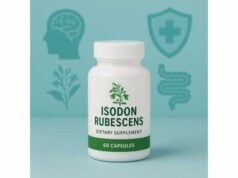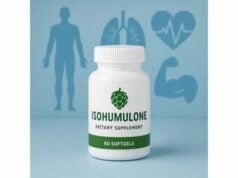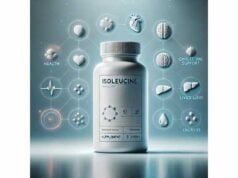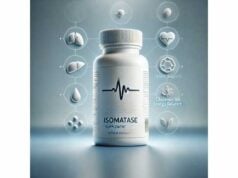
Italian oregano oil is a concentrated essential oil steam-distilled from oregano leaves and flowering tops traditionally grown in Mediterranean climates, including Italy. Its distinctive aroma comes from phenolic compounds—chiefly carvacrol and thymol—that show broad antimicrobial activity in laboratory settings and contribute to oregano’s culinary punch. Unlike culinary oregano leaf, however, essential oil is potent, fat-soluble, and not a routine food; it requires careful dilution and thoughtful use. In this guide you’ll learn what Italian oregano oil actually contains, where its benefits are realistic (and where they are over-sold), how to use it safely in the kitchen, on the skin, and around the home, and what dosage ranges and durations make sense. You’ll also find plain-English advice on choosing quality products, common mistakes to avoid, safety caveats for vulnerable groups, and a concise evidence summary to set expectations before you buy.
Key Insights
- Main benefits are antimicrobial and deodorizing in food and home uses; limited, non-specific wellness effects in humans.
- Typical oral use (enteric-coated capsules) ranges 25–100 mg oil per day for short periods; topical blends 0.5–2% in a carrier oil for small skin areas.
- Safety caveat: undiluted essential oil can irritate or burn skin and mucosa; ingestion of pure oil is risky and not advised without clinician guidance.
- Avoid in pregnancy, breastfeeding, infants and young children, and anyone with known oregano or Lamiaceae allergies.
Table of Contents
- What is Italian oregano oil and how it works?
- Proven and plausible benefits explained
- How to use it: cooking, topical, and aromatherapy
- Dosage, forms, and practical ranges
- Quality checklist and product-label decoding
- Side effects, who should avoid, and safety tips
What is Italian oregano oil and how it works?
Botanical identity. “Italian oregano oil” usually refers to essential oil from Origanum vulgare (Mediterranean oregano) grown in Italy or nearby regions. Oregano species differ; chemotypes with higher carvacrol and thymol are typically chosen for essential oil production. Culinary oregano leaves include aroma plus fiber and polyphenols; essential oil isolates only the volatile fraction.
How it is produced. The oil is obtained by steam distillation of fresh or recently dried aerial parts. Yields are low (often <3% by weight), which is why a small bottle contains the volatile essence of a large mass of plant material. The resulting oil is hydrophobic, highly concentrated, and should be diluted before use on skin or in capsule blends.
Key constituents and mechanisms.
- Carvacrol and thymol (phenolic monoterpenes) disrupt microbial membranes, alter ion gradients, and increase permeability.
- p-Cymene, γ-terpinene, and other terpenes modulate aroma and may influence activity through additive or synergistic effects.
- In food systems and lab studies, these constituents inhibit or slow growth of a range of bacteria and fungi and can reduce oxidation in fats.
Potency versus tolerance. Those same membrane-active properties can irritate human skin and mucosa if you use the oil neat (undiluted). The goal in practical use is enough exposure to benefit flavor, hygiene, or surface sanitation without provoking irritation—hence the emphasis on dilution, small amounts, and short durations.
Italian versus “generic” oregano oil. Origin matters less than chemotype and standardization. A high-carvacrol oil from Greece or Turkey may behave similarly to one from Italy; a low-carvacrol oil may be gentler but less antimicrobial. Always check the GC–MS profile (if available) for carvacrol/thymol percentages to understand strength and likely scent.
Bottom line: Italian oregano oil is the concentrated volatile essence of oregano, dominated by carvacrol and thymol that can destabilize microbial membranes. That explains both its antimicrobial promise and its potential to irritate human tissues if used carelessly.
Proven and plausible benefits explained
What is well supported (contexts with practical value):
- Food preservation and kitchen hygiene (adjunct use). In culinary settings, trace amounts of oregano essential oil help flavor dishes and, in combination with refrigeration and good handling, can contribute to microbial control in dressings, marinades, and oil-based dips. Blends of phenolic terpenes show activity against common spoilage organisms in lab and food-model studies.
- Topical deodorizing and cosmetic use (diluted). At low topical dilutions (≈0.5–1%) in a carrier oil or lotion, oregano oil can assist with malodor control on intact skin. Many people prefer milder oils for daily use; oregano’s intense scent makes it better for targeted, short-term applications.
- Household surface freshness. In DIY cleaners (properly diluted in surfactant systems or alcohol), oregano oil contributes scent and supports surface deodorizing. It should not replace standard disinfectants when high-level sanitation is required.
What is plausible but not clinically established in humans:
- General wellness or immune “support.” Antioxidant and antimicrobial properties in vitro do not equal disease treatment in people. If you notice “feeling better” while using oregano oil capsules, that likely reflects broad routine changes (rest, hydration, supportive care) rather than a distinct pharmacologic effect.
- Oral microbiome and gum health adjuncts. Mouthwashes or toothpastes may include low concentrations of plant terpenes; oregano’s phenols can reduce bacterial counts in vitro. Because essential oils can irritate oral mucosa, only use products formulated for the mouth—do not add essential oil to water and swish.
- Gut-focused claims. Enteric-coated oregano oil capsules are marketed for gastrointestinal balance. While animal and in-vitro data suggest membrane-active effects on microbes, robust human trials are sparse. If you experiment, use short courses and monitor tolerance.
What is not supported:
- Cure-all claims for infections, parasites, or chronic diseases. Oregano oil does not replace antibiotics, antifungals, or clinician-directed care.
- Undiluted topical or oral use. Neat essential oil is not safer or more effective; it is simply more irritating and risk-prone.
Takeaway: Expect flavor, fragrance, and modest adjunct antimicrobial effects in kitchen and household contexts; be cautious about medical claims without strong human evidence. Keep doses and exposure low and targeted.
How to use it: cooking, topical, and aromatherapy
In the kitchen (food-grade oil only):
- Dilute first. Pre-mix 1 drop of essential oil into 1–2 tablespoons (15–30 mL) of olive oil to make a flavored oil, then add ½–1 teaspoon of that flavored oil to dressings or marinades. This keeps final concentrations extremely low while delivering aroma.
- Add at the end of cooking. Heat drives off volatiles and can make flavor harsh. Stir the flavored oil into warm (not boiling) sauces just before serving.
- Pair wisely. Oregano oil marries well with tomato, lemon, garlic, grilled vegetables, and seafood.
- Food safety note. Do not rely on essential oil to “sanitize” risky foods. Safe temperatures and hygiene remain primary.
Topical use (always diluted):
- Everyday spot use: Mix a 0.5–1% dilution (≈ 3–6 drops per 30 mL carrier oil). Apply to a small, intact-skin area once daily for up to a week; discontinue if irritation appears.
- Foot care/deodorizing: A 1–2% dilution in a rich carrier (for example, jojoba, almond) after bathing can help with odor. Avoid broken skin and nails; do not occlude.
- Patch test: Apply a tiny amount of the diluted blend to the inner forearm for 24 hours before broader use.
Aromatherapy and home use:
- Diffusion: 1–3 drops in a water-based diffuser for 15–30 minutes in a ventilated room. Oregano’s scent is intense; many prefer to blend 1 part oregano with 3–5 parts gentler oils (citrus or lavender).
- DIY surface spray: Combine 5–10 drops oregano oil per 250 mL of 60–70% alcohol in a labeled spray bottle for light deodorizing of non-porous surfaces. Keep away from eyes, plastics sensitive to solvents, and pets until surfaces dry.
What not to do:
- Do not put undiluted oil on skin or mucosa.
- Do not add drops to water and drink; oil does not disperse in water and concentrates on mucosa.
- Do not use in baths (oil floats and pools on skin).
- Do not use on infants/young children or during pregnancy/breastfeeding.
Storage and handling:
- Store tightly capped, away from heat and light.
- Wipe the orifice reducer after use to prevent drips that oxidize and irritate skin on next contact.
- Use within 12–24 months of opening; older oils oxidize and are more irritating.
Bottom line: Keep oregano oil low, slow, and local—low concentrations, short durations, targeted applications.
Dosage, forms, and practical ranges
Forms you’ll see:
- Pure essential oil (bottle). Requires dilution for culinary, topical, or diffusion uses.
- Enteric-coated capsules. Blend oregano essential oil with a carrier (for example, olive oil) in softgels designed to open past the stomach.
- Pre-diluted roll-ons or creams. Convenient for topical use if the label specifies the percent dilution and full ingredient list.
Practical ranges (adults):
- Culinary use: 1 drop pre-diluted into 15–30 mL of olive oil; then use ½–1 tsp of that flavored oil per serving.
- Topical spot applications: 0.5–1% dilution (≈ 3–6 drops per 30 mL carrier). For thicker skin (feet), up to 2% short term if well tolerated.
- Aromatherapy diffusion: 1–3 drops per session, 15–30 minutes, in ventilated areas.
- Enteric-coated capsules: labels often suggest 25–100 mg essential oil per day (sometimes divided), typically for up to 2–4 weeks. Because human clinical evidence is limited and GI irritation can occur, keep courses short and take with food unless otherwise directed.
Stacking and combinations:
- Many capsules combine oregano oil with carvacrol-rich standardization claims (for example, “≥ 60–80% carvacrol”). Higher carvacrol content increases potency and irritation potential; start at the low end of the range.
- Blends with garlic, berberine, or caprylic acid are marketed for gut protocols. Evidence for multi-ingredient stacks is limited; more ingredients can also mean more intolerance.
When to adjust or stop:
- Mouth/throat burning, reflux, cramping, or diarrhea—reduce the dose or discontinue.
- Rash or hives—stop immediately.
- No clear benefit after 2–4 weeks—stop; ongoing daily use is not necessary for most people.
Special populations:
- Pregnancy/breastfeeding: avoid.
- Children: avoid essential-oil ingestion and diffusion around infants/young kids; do not apply topically.
- Medication users: oregano oil may increase mucosal irritation (caution with GERD) and, theoretically, affect drug metabolism. Keep your clinician informed if you plan any internal use.
Key point: There is no universal therapeutic dose for oregano essential oil. Use the smallest amount that achieves your goal and for the shortest useful time.
Quality checklist and product-label decoding
1) Correct plant name. Look for Origanum vulgare (or related Origanum species). Avoid vague “oregano oil” with no Latin binomial.
2) Country of origin and batch testing. Reputable brands disclose harvest region (e.g., Italy) and provide GC–MS reports showing carvacrol (%), thymol (%), and absence of adulterants (for example, added synthetic carvacrol).
3) Purity and carrier oils. If buying a bottle labeled “100% essential oil,” it should contain only oregano essential oil. Pre-diluted products must list the carrier (olive, jojoba) and the dilution percent.
4) Packaging. Amber or cobalt glass with an orifice reducer protects from light and minimizes oxidation. Avoid plastic droppers, which can degrade.
5) Freshness. Prefer recent bottling dates and buy sizes you’ll finish within a year. Older oils oxidize and more readily irritate skin.
6) Sensory check. True oregano oil smells sharp, spicy, and herbaceous; it should not smell sweet, perfumey, or solvent-like. A harsh, chemical odor may suggest adulteration or oxidation.
7) Label realism. Be skeptical of disease claims (“kills all pathogens,” “treats SIBO”). Honest labels describe standardization (e.g., “≥ 70% carvacrol by GC–MS”), intended uses, and dilution instructions.
8) Allergen statements. Facilities that process multiple botanicals should disclose cross-contaminants. If you have Lamiaceae allergies (mint, thyme), take extra care.
9) Third-party verification. Independent testing (identity, potency, contaminants) increases confidence. Request batch COAs when possible.
10) Sustainability. Mediterranean oregano can be cultivated responsibly; choose brands that discuss sourcing and avoid overharvesting from wild stands.
Result: A high-quality Italian oregano oil product is accurate in identity, transparent about composition, properly packaged, and honest about what it can and cannot do.
Side effects, who should avoid, and safety tips
Common adverse effects (dose-dependent):
- Skin irritation or burning with undiluted or high-percent topical use.
- Mouth/throat burn, reflux, nausea, abdominal cramping with internal use.
- Headache or scent fatigue if diffused at high intensity or for long sessions.
Less common but important:
- Allergic reactions (hives, wheeze, swelling) in people sensitive to oregano, thyme, or related mint family plants.
- Photosensitization is uncommon with oregano (compared with citrus oils) but irritation increases with oxidized oil—discard rancid/aged bottles.
Who should avoid:
- Pregnant or breastfeeding individuals (insufficient safety data; essential oils readily cross membranes).
- Infants and young children (airway sensitivity and high surface-area-to-mass ratio).
- People with active GERD, peptic ulcers, or severe IBS (oil can aggravate symptoms).
- Anyone with known allergies to Lamiaceae (oregano, thyme, basil, mint).
Drug and health considerations:
- Potential mucosal irritation may worsen reflux or interact poorly with NSAIDs or other GI-irritating agents.
- If you take multiple medications metabolized by CYP enzymes, keep your clinician informed before prolonged internal use of any essential oil product.
- Do not combine with undiluted topical use of other “hot” oils (cinnamon, clove) on the same skin area.
First-aid guidance:
- On skin: flush with carrier oil (olive, coconut), not water; water spreads the oil. Wash with mild soap afterward.
- In eyes: rinse with copious lukewarm water for several minutes and seek medical care if burning persists.
- Accidental ingestion of undiluted oil: do not induce vomiting; seek medical help and bring the bottle.
Responsible use in three steps:
- Dilute (0.5–1% for skin; flavor via pre-diluted culinary oil).
- Limit (short sessions, short courses).
- Listen (stop if irritation or symptoms appear).
Used this way, Italian oregano oil can be a useful culinary and aromatic accent with reasonable safety. Used neat, daily, or as a cure-all, it quickly becomes more risk than reward.
References
- Essential Oils of Oregano: Biological Activity beyond Their Antimicrobial Properties — 2017 (Review)
- Antimicrobial activity of essential oils of cultivated oregano against Gram-positive and Gram-negative bacteria — 2015 (Study)
- Carvacrol and human health: A comprehensive review — 2018 (Review)
- Clinical Aromatherapy — 2020 (Safety Overview)
- Safety and efficacy of an essential oil from Origanum vulgare subsp. hirtum var. Vulkan when used as a sensory additive in feed — 2019 (Safety Assessment)
Medical Disclaimer
This article is for general education and is not a substitute for personalized medical advice, diagnosis, or treatment. Essential oils are concentrated substances that can irritate or harm when misused. Do not ingest oregano essential oil or apply it to skin undiluted. Avoid use in pregnancy, while breastfeeding, and in infants or young children. If you have allergies, chronic conditions, or take prescription medications, consult a qualified clinician before using any oregano oil product. Seek medical care immediately for signs of an allergic reaction or accidental poisoning.
If this guide was helpful, please consider sharing it on Facebook, X (formerly Twitter), or your preferred platform, and follow us for more evidence-aware wellness articles. Your support helps us continue producing high-quality, people-first content.










